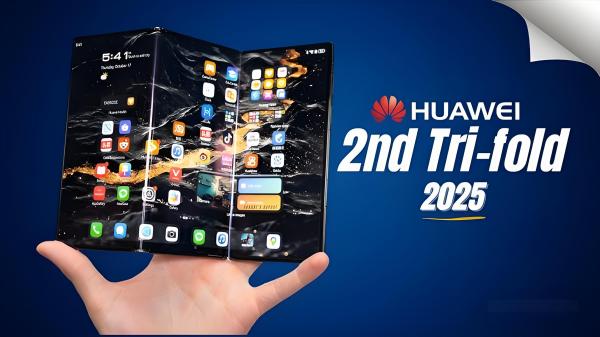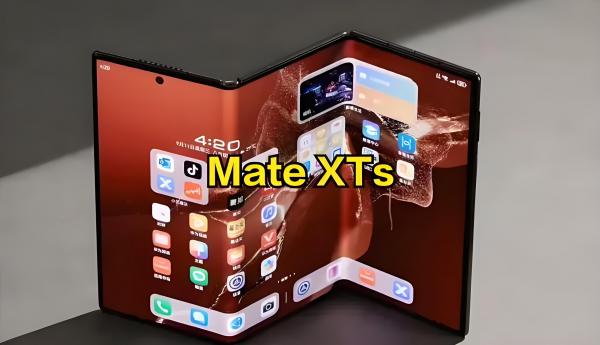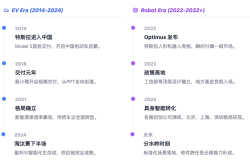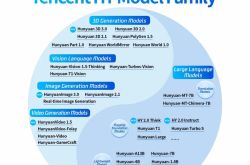Huawei Mate XTs Unveiled: Kirin 9020 + Maple Leaf Imaging, Setting a New Benchmark with an Impressive Price Tag!
![]() 07/07 2025
07/07 2025
![]() 492
492
A series of leaks from the supply chain and multiple media outlets have revealed the core specifications and numerous real-device details of Huawei's next-generation triple-folding flagship, the Mate XTs. The device continues to feature a 10.2-inch LTPO OLED screen and a 'Z'-shaped triple-folding design, measuring just 3.6mm in thickness when unfolded. It pioneers the integration of the Kirin 9020 chip and low-orbit satellite internet communication, retaining a 5600mAh battery and supporting 66W super fast charging. Although the camera system remains a 50MP triple-camera setup, it boasts enhanced photography, creation, and cross-screen efficiency thanks to XMAGE 3.0 and full-link support of large-model AI. According to leaks, it will enter the domestic high-end market in September 2025 with a starting price exceeding RMB 20,000.

Firstly, the Huawei Mate XTs retains its triple-folding structure, fitting a 10.2-inch 2K+ main screen with a 3:2 aspect ratio into your pocket. When unfolded, it seamlessly transforms into a tablet, and when folded, it can switch to single-screen or dual-screen working modes, significantly enhancing commuting and office flexibility. To ensure portability, Huawei continues to use a 'double hinge' solution and upgrades it to a new generation of 'Tiangong' mechanical structure. Coupled with ultra-steel glass cover plates and UTG composite films, official internal testing claims that the crease remains almost invisible after 100,000 openings and closings. More importantly, through more precise folding trajectories and layered stacking, the device achieves a balance between a 'large screen' and 'slimness,' measuring just 3.6mm thick when unfolded and maintaining a folded state below last year's Mate XT Ultimate Design level.
On the performance front, the Mate XTs introduces the Kirin 9020, a 3nm SoC featuring a 1+3+4 cluster Taishan architecture. This chip offers approximately 40% improvements in CPU and GPU theoretical performance compared to the Kirin 9010. Coupled with high-speed LPDDR5X and UFS 4.1 flash memory, it effortlessly handles multi-screen multitasking and high-frame games for extended periods without frequency reduction. Additionally, Huawei has integrated its low-orbit satellite internet solution into the Mate XTs. Beyond traditional Beidou short messages, the phone can directly connect to the internet via the 'Qianfan Constellation' for voice and multimedia messaging, providing a reliable fallback for weak network scenarios such as islands, deserts, and open seas.
The camera system comprises a 50MP variable aperture main camera, a 12MP ultra-wide camera, and a 12MP 5.5x periscope telephoto camera. However, the real game-changer lies in the synergy between XMAGE 3.0 and the AndesGPT local large model. This allows for real-time HDR processing on one side of the large screen while AI photo editing and subtitle generation occur on the other, significantly boosting the work efficiency of multimedia creators. Huawei has also designed a partitioned framing UI for the 10.2-inch large field of view. When the hinge is placed flat, the lower half of the main screen becomes a timeline and color level adjustment area, while the upper half retains a 16:10 framing window. These experiences are unmatched by current single-axis foldable and straight-plate flagship devices.

The Mate XTs retains a built-in 5600mAh high-density battery, maintaining 66W wired + 50W wireless fast charging specifications. It can continuously play 1080p videos for nearly 9 hours with all three screens fully lit at 60Hz. When the secondary screen is turned off and the LTPO 1Hz power-saving mode is enabled, there is still ample battery life for heavy use in a single day. HarmonyOS NEXT will be the factory system, and the NEXT 2.0 update planned for early 2026 will introduce GPU scheduling, low-power satellite positioning, and full-link edge-side AI capabilities, enabling large-model summarization, offline translation, and distributed collaboration without the cloud.
Regarding pricing and launch schedule, multiple channels indicate a 'September Shanghai Autumn Flagship Conference,' revealing that the first batch of domestically mass-produced colors will be gold-plated black, silent silver, and starry purple, with a starting price expected to range between RMB 19,999 and RMB 21,999. Considering the predecessor Mate XT ULTIMATE DESIGN's pricing strategy of 3499 euros in Europe, it is evident that the high-end triple-folding form factor remains Huawei's 'pinnacle achievement' in competing with potential new products from Samsung, Honor, and others.

In conclusion, the Mate XTs represents more than just a performance or design upgrade; it is a significant leap forward in folding form factor, communication capabilities, AI experience, and battery life. It leverages triple folding to truly fit a 10.2-inch screen into your pocket, satellite direct connectivity to ensure 'never offline,' and the Kirin 9020 and HarmonyOS NEXT to enable local multitasking and content creation in a closed loop. For high-end users seeking ultimate productivity and a futuristic feel, this is undoubtedly a 'desktop-replacement-level' mobile terminal worth saving up for. For the mass market still on the fence about foldable new products, it poses an intriguing question: When large screens and portability are no longer conflicting, do we still need traditional tablets? Share your thoughts in the comments section to spark more imagination about the future of triple folding!







